Aiken, Howard Hathaway (1900-1973)
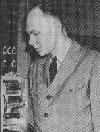
Harvard mathematician who, during World War II, created Charles Babbage's dream machine, with the help of the U.S. Navy and IBM. The Harvard-IBM MARK I, a program controlled, large scale calculating machine completed in 1944.
Allen, Paul G. (1953- )
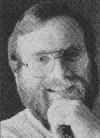
Co-founder of Microsoft Corp. Allen left the company in 1985 but remained
on the board of directors and as founded or financially supported several
innovative computer ventures, including Asymetrix and Starware Corp. He
is involved with a variety of other projects, including a Jimi Hendrix
Museum in Seattle.
Amdahl, Gene M. (1922- )
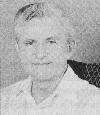
South Dakota native who helped design the IBM 704, the S/360 series. He was the founder of the Amdahl Corp.
Andreessen, Marc (1971- )
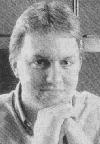
Co-founder (at the age of 22) of Netscape Communications, along with Silicon Graphics founder James H. Clark. Before Andreessen graduated from the University of Illinois in Champaign, he had created the NCSA Mosaic prototype with a team of students and staff at the university's National Center for Supercomputing Applications.
Atanasoff, John Vincent (1904-1995)
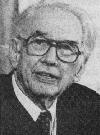
Physics professor at Iowa State College, in 1939, he and a graduate student, Clifford Berry, had a working prototype of the binary based ABC (Atanasoff-Berry Computer), but the machine was abandoned when Atanasoff went to work for the Naval Ordnance Laboratory in Washinton, D.C.
Babbage, Charles (1791-1871)

Eccentric, English mathematician who is considered to have conceptualized the modern computer a century before technology let it be built. He conceptualized the Difference Engine, a machine that would have computed lengthy scientific tables, but money, labor, and health problems prevented its completion. The Analytical Engine, a more ambitious plan, would have done a wide range of calculating tasks. With it, Babbage recognized the need for an input device, memory, a central processing unit, and an output device, and for this he is known as the Father of Computing.
Backus, John W. (1924- )

Mathematician from Philadelphia who headed the research team at IBM that created FORTRAN, the first machine independent programming language.
Bardeen, John (1908-1991)
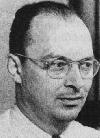
Wisconsin born co-inventor of the transresistor, or transistor, and a member of the AT&T Bell Telephone Laboratories team along with Walter Brattain and William Shockley. The three received a Nobel Prize in physics in 1956, and Bardeen went on to share another for research on superconductivity at low temperatures, making him the only scientist to receive two Nobel Prizes in the same field.
Bartik, Jean (1935- )
Missouri born math prodigy recruited in 1945 to join a University of Pennsylvania team of young women who calculated trajectories to help wartime artillery gunners aim the weapons. The Army called Bartik and the other women computers because of their complex work. After the Army's unveiling of the ENIAC, Bartik began working with Adele Goldstine, revamping it to be a stored program computer. Though they worked closely with the great mathematician John von Neumann, it was Bartik who wrote the code.
Bell, Gordon (1934- )

Missouri born engineer who made innovations in the design of everything from small computers to multiprocessors. The open bus structure and general registers for memory addressing were among the innovations. He designed the first minicomputers and time sharing computers. He founded the Computer Museum in Boston with his wife, Gwen.
Beard, Maston
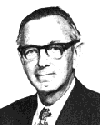
Graduated in 1939 from Sydney University and was involved in radio transmitter
design and radar research until joining the CSIRAC project in 1947 (the first
stored-memory electronic computer in Australia). When the computer was moved
to the University of Melbourne in 1955, he continued work on digital techniques
and the application of computers in connection with navigational aids for
civil aviation, the processing of data from radio telescopes, the control
of Narrabri radio heliograph, and the control of the Siding Spring 3.9-meter
telescope. He retired from CSIRO in 1978 while assistant chief at the Division
of Computing Research. Following his retirement he served as a Senior Research
Fellow in the CSIRO Division of Radiophysics. In 1980 he was awarded an Order
of Australia Member (AM), in recognition of services to Radiophysics.
Berners-Lee, Tim
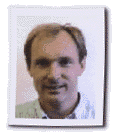
British Oxford graduate who is the father of the World Wide Web. He created
Hypertext Markup Language (HTML) and Hypertext Transfer Protocol (HTTP), with
a Universal Resource Locator (URL) that could locate data.
Berry, Clifford Edward (1918-1963)

New York born graduate student at Iowa State College who, along with John Atanasoff designed but never finished the first machines to use electronic techniques in digital calculation. Although Atanasoff is generally credited with the machine's concept, Berry is said to have done an equal amount of work on the actual design and construction.
Boole, George (1815 - 1864)

Self taught British mathematician. He proposed a form of logic now known a Boolean algebra using two digits: 1 and 0.
Booth, Andrew Donald (1918- )
British engineer and physicist who was an early proponent of magnetic drum memories for computers. By 1952, he and his father were selling fairly reliable working drums made from brass cylinders plated with nickel. He also tried to construct a floppy disk with oxide coated paper.
David Bradley
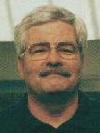
His 1980 design decisions for the IBM PC still live on today. Invented
<CTRL><ALT><DELETE>.
Brainerd, Paul (1947- )
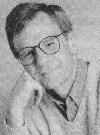
Former Minnesota newspaperman who was the founder of the Aldus Corp. His revolutionary program, Aldus PageMaker.
Brattain, Walter (1902-1987)
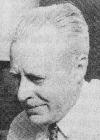
China born American who co-invented the transistor, with John Bardeen and William Shockley. they shared a Nobel Prize in physics in 1956.
Bricklin, Dan (1951- )
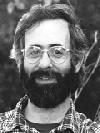
Conceived and designed the first electronic spreadsheet, VISICALC, which was released in 1979. Bob Frankston, wrote the code.
Burroughs, William S. (1857-1898)
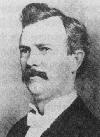
New York born inventor who, after working in a bank, was so appalled by the inaccuracies of hand accounting that he created and patented a printing adding machine in 1888.
Case, Steve (1958 - )

At 25 years of age, Case was heading the attempt to keep Control Video afloat. Two years later the company began to provide online services for Commodore computer users and changed its name to Quantum Computer Services. Within a couple of years, Case had crafted online deals with Apple Computer and Tandy. Apple eventually bailed out to launch its own online service, so Quantum revamped and consolidated. Case decided the company needed a new image, so he held a contest for a new name. He picked himself as the winner and America Online was born, although it's first name was Online America. In 1992, with just 120 employees, AOL went public, raised $66 million and Case was suddenly worth nearly $2 million on paper. Shortly after that, he was made CEO.
Cerf, Vinton G. (1943- )
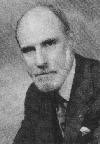
Born in New Haven, Conn., the Father of the Internet co-developed the TCP/IP
(Transmission Control Protocol / Internet Protocol)
Cowpland, Michael Dr.
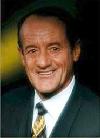
Born Bexhill, Sussex, England, April 23, 1943
Engineering Design and Project Leader, Bell Northern Research (1964-68)
Manager, Circuit Designs, Microsystems International Limited (1969-73)
President and Co-founder of Mitel Corporation (1973-84)
Founder, President and CEO of Corel Corporation (1985-2000)
Cray, Seymour (1925-1996)
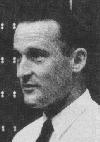
Wisconsin born inventor who made the computer SUPER and fast with his innovations and also founded the Control Data Corp. along with William Norris and seven others.
Christensen, Ward
He and a friend, Randy Suess, created the first BBS February 16, 1978, in Chicago.
It wasn't called a BBS. The name was CBBS, and for a time prople wondered what it stood for. Christensen's Bulletin Board System? Chicago Bulletin Board System? Ward says it meant Computerized Bulletin Board System and all the early Boards were termed a CBBS until the C was eventually dropped.
The first BBS ran on an S-100 computer with 64k RAM and two single-sided 8" diskettes each holding 250k.
Randy put the hardware together; Ward wrote the BBS software in 8080 assembler and served as the system operator, a term quickly shortened to sysop.
Eckert, John Presper (1919-1995)
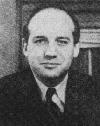
Pennsylvania physicist who worked with John W. Mauchly and a 50 member team to create the first general purpose electronic calculator, known as the ENIAC (Electronic Numerical Integrator And Calculator).
Engelbart, Douglas C. (1925- )
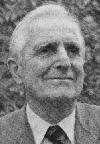
Oregon native who is famous for inventing and patenting the first computer mouse in 1963. He holds about 20 patents, mostly for basic features in micro computing.
Faggin, Fedirico
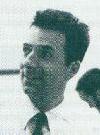
Intel engineer who created a general purpose, programmable logic chip called the 4004. He was aided by Hoff, Shima and Mazor.
Felsenstein, Lee
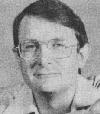
Inventor who, created the Video Circuit Board, Pennywhistle modem, Osborne 1 computer along with Adam Osborne, Expander Computer, Sol computer.
Fernandez Bill
In 1968 introduces his high school buddy Steve Jobs to his neighbor Steve Wozniak. Enough said.
Filo, David (left)
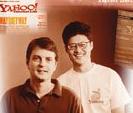
1994. That's when with Jerry Yang (right), these two PhD students created Yahoo! directory to help their Stanford pals locate cool Web sites.
Flowers, Thomas H. (1905- )
Engineer who led the team that created a fast, digital, all electronic machine
called the COLOSSUS, of which several copies were
presumably used for British code breaking during World War II.
Forrester, Jay Wright (1918- )
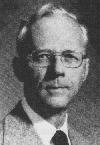
Nebraska native and MIT professor who made an important innovation in the way magnetic core memory was arranged and led the team that created Whirlwind, which was made to control flight simulators but ended up being used for any problems requiring real time control.
Gates, William Henry III (1955 -)

Seattle born Harvard dropout who, with Paul Allen co-founded Microsoft.
Gernelle, Francois (1945 - )
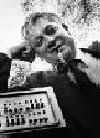
In 1972, he joins Truong who just started R2E, and during a meeting with the people responsible for l'Inra “Institut national de recherche agronomique” who are looking for a cheap way to build a system to calculate the soil evapotranspiration, François Gernelle proposed to build a calculator for half the price.
He created the first micro-computer in the process. The Micral.
Geschke, Charles M.
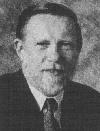
The founder of Adobe Systems in 1982 who, along with John Warnock, went on to create what will become known as the desktop publishing.
Goldstine, Adele
Mathematician who wrote the manual for the ENIAC and also was involved with its programming.
Goldstine, Herman Heine (1913- )
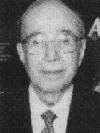
Mathematician (Husband of Adele Goldstine) who helped design the ENIAC, at the University of Pennsylvania. He also worked with John von Newman on scientific papers at the Institute for Advanced Study (IAS) and went on to write one of the most complete computer history books.
Hewlett, William R. (1913- )
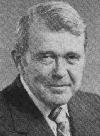
Michigan born engineer who, in 1939 along with David Packard created Hewlett-Packard Corp.
Hoff, Marcian Edward Jr. (Ted) (1937- )

Intel engineer who invented a general purpose, programmable logic chip called the 4004. Hoff was aided by Federico Faggin, Shima and Mazor.
Holberton, Betty (1927- )
One of the team of young women at the University of Pennsylvania who, in 1945 calculated trajectories to help war time artillery gunners aim their weapons. When the ENIAC was invented, Holberton and five other women worked on it, becoming the world's first programmers.
Hollerith, Herman (1860-1929)
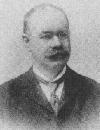
New York born engineer who developed a way to use punched cards to tabulate data for the U.S. Census Bureau's 1890 Census.
Holt, Ray (1944 -)
Nickname "Jolt"
Named by business partner who is spanish and Jolt is Spanish for Holt.

In 1971, Mr. Ray Holt wrote a design paper on the MOS-LSI chip set design the
World's First Microprocessor Chip Set Designed and Developed 1968-1970.
Co-designing the AMI 7200 and AMI 7300 in 1972-73, both general purpose microprocessors used in specialized products, as well as other special purpose microprocessors used in high-end calculators. In 1974, he co-founded Microcomputer Associates, Inc., and designed the JOLT and Super JOLT kit series.Other early accomplishments include the first microprocessor pinball game (1974), co-publisher of the first microcomputer industry publication, The Microcomputer Digest (1974), co-author of seven microprocessor design papers in the 70s, co-curriculum designer instructor for the first Intel microcomputer training courses (1973), beta tester for the Commodore PET BASIC language, and participation in the development of the prototype of the TRS-80 Model 1.
Hopper, Grace Brewster Murray (1906-1992)

New York born mathematician who has been called the first lady of software and the first mother teacher of all computer programmers. She invented the first programming languages in the 1950's, for the MARK I and UNIVAC I, and also invented the first compilers. She led the creation of COBOL which is the Common Business Oriented Language along with Charles Phillips. She was the first woman to get a doctorate in math from YALE, served as a Rear Admiral in the U.S. Naval Reserves.
Jacquard, Joseph-Marie (1752-1834)
French weaver who built a fully automated loom programmed by punched cards. (The looms are still in use).
Jobs, Steven Paul (1955- )

California college dropout who, along with Steve Wozniak, co-founded Apple Corp. After creating the Apple computer in Jobs' parents' garage. He went on to co-found NeXT Computer.
Johnson, Reynold B. (1906-1998)
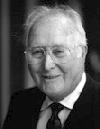
Father of hard drives
A pioneer in the development of magnetic disk technology and computerized educational systems. He led the development and production of the first random access magnetic disk storage unit and the multiple head actuator.
He is the founding manager of the IBM Research Laboratory and the IBM Advanced Systems Development Division, San Jose and Los Gatos California Laboratories. His effort helped establish San Jose and the Silicon Valley region as the center of the disk drive industry of the world. He holds more than 90 patents in the areas of educational technologies, code translations, communications technology, and magnetic storage systems.
Kahn, Philippe

Kahn was born in Paris to a French mother and German father. After completing a mathematics degree in the 1970s, he moved to Switzerland to work on the PASCAL programming language. He then took the opportunity to program the Micral, a French microcomputer that beat the MITS Altair by more than a year.
In 1982 Kahn moved to the United States with $2,000 and a business plan.
The following year, he rented a space over a garage and founded Borland International. Starting with Turbo-Pascal, the self-styled "barbarian of the software industry" built the third largest software company in the world.
Borland's great times didn't last. Kahn's brash style alienated many people, including Bill Gates, who headed archrival, Microsoft. Kahn thought he could beat Microsoft, but a series of acquisitions and poor market decisions hurt Borland's prospects.
Kapor, Mitchell (1950- )
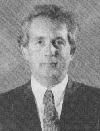
New York born software designer who created Lotus 1-2-3 along with Jonathan Sachs, and founded the Lotus Development Corp. in 1982 in Cambridge, Mass.
Kay, Andy

Andy Kay (MIT '40), who as CEO at Non Linear Systems, invented and produced the digital voltmeter. Credited by Electronics Design magazine together with Dr. William Shockley, co-inventor of transistor, for "leading the electronics industry into the digital revolution." Another of Andy Kay's creations, KAYPRO, a local company that captured the attention of the personal computer world. KAYPRO, in 1983, was rated the 5th largest personal computer manufacturer in the world.
Kay, Alan C.

Mathematician who conceived the basic concepts of high level, object oriented programming and subsequently designing Small-talk, the first completely object oriented language, while working at Xerox Palo Alto Research Center.
Kemeny, John (1926-1992)
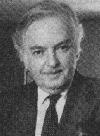
Hungarian native and Dartmouth mathematician who co-developed BASIC in 1964, along with Thomas Kurtz. Kemeny was physicist Albert Einstein's research assistant.
Kilby, Jack St.Clair (1923- )
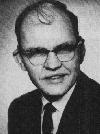
Engineer who grew up in Kansas and who independently invented the integrated circuit at Texas Instruments in 1945, at the same time as Robert Noyce at Fairchild Semiconductor. Along with Jerry D. Merryman and James Van Tassel, Kilby helped invent the first electronic handheld calculator by adapting the integrated circuit.
King, Augusta Ada (Lady Lovelace) (1815-1852)

She was best known for translating from French to English a report on a lecture Babbage gave, she added her own lengthy notes to the text, and has been credited with developing the concepts of "loop" and "subroutine". Babbage said that she explained the machine much better than he did and seemed to understand it better.
Kildall, Gary
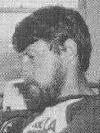
Gary Kildall wrote PL/M, the first high level programming language for the Intel microprocessor. Gary Kildall also wrote a simple operating system in his PL/M language. He calls it CP/M (Control Program/Monitor).
Knuth, Donald Ervin (1938- )
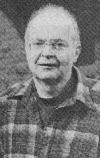
Milwaukee born programmer, author, musician, and professor at Stanford who as written three volumes of a planned seven volume book series called "The Art of Programming", which is a summary of basic computer science. He also developed a scientific typesetting language called Tex and an alphabet design system called Metafont.
Kurtz, Thomas (1928- )
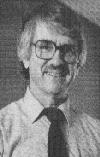
Illinois born mathematician who co-developed BASIC in 1964, along with John Kemeny.
Lake, Clair D. (1888-1958)
IBM engineer credited by Howard Aiken as one of the co-inventors of the Harvard-IBM MARK I finished in 1944.
Leibniz, Gottfried Wilhelm (1646-1716)
German who invented the first machine that could easily add, subtract, multiply and divide. He was also an advocate of the binary system.
Licklider, J.C.R. (1915-1990)
He headed the Information Processing Technology Office at the U.S. Advance Research Projects Agency in the 1960's. While at his post, he established funding priorities for computer science research, which eventually led to the development of the Internet and the networking of computers.
Markkula, A.C. "Mike"
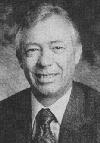
Former Intel executive who invested in Apple early on, essentially becoming a third partner to Steve Wozniak and Steve Jobs.
Mauchly, John William (1907-1980)
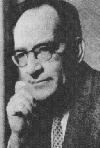
Ohio born physicist who worked with J. Presper Eckert and a 50 member team to create the first electronic large scale, general purpose calculator, known as the ENIAC.
McCarthy, John (1927- )
Boston born mathematician who is considered to be one of the fathers of artificial intelligence for coining the term and for his work in helping computers reason more like human. He also created the programming language LSP in 1958.
Metcalfe, Robert (1946- )
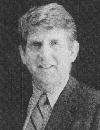
New York native who led the creation of Ethernet, which linked the mini computers found at the Xerox Palo Alto Research Centre in 1973.
Miner, Jay
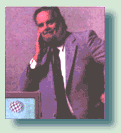
Jay Miner, was responsible for the development of the "Amiga", along with RJ Mical, Dave Morse and Carl Sassenrath.
Moore, Gordon (1929- )

California born who helped Robert Noyce develop the semi-conductor chip at Fairchild Semi-conductor in 1958. At the same time that Jack Kilby was inventing one at Texas Instruments. Later Noyce and Moore co-founded Intel Corporation. In 1965 he predicted that the capacity of a computer chip would double every year. (Moore's law).
Napier, John (1550-1617)
Scottish theologian and mathematician who discovered logarithms at the same time as the Swedish mathematician Jobst Burgi.
Nelson, Ted (1937- )
Person who coined the term "hypertext" in 1965. He also proposed Xanadu, which would put the world's literary collection online and deal with copyright and accounting problems.
Norris, William (1911- )

Nebraska engineer who founded the Control Data Corp. He gave Seymour Cray free rein to develop a supercomputer line that included the 6600.
Noyce, Robert N. (1927-1990)
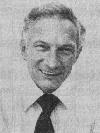
Iowa electrical engineer who invented the integrated circuit in 1958 at Fairchild Semi-conductor with the help of Gordon Moore, at the same time Jack Kilby was inventing it at Texas Instruments. He went on to co-found Intel Corp. in 1968, with Moore.
Oliver, Bernard (1916-1995)

Founder of Hewlett-Packard Laboratories in the early 1950's who directed its research for approximately 30 years.
Olsen, Kenneth Harry (1926- )
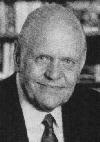
Connecticut born electrical engineer who built a computer to test magnetic memory and helped build Whirlwind. He also co-founded Digital Equipment Corp. with Harlan Anderson.
Osborne, Adam (1939- )
Introduced the first commercially successful "portable" computer in 1981, the Osborne 1.
Packard, David (1912-1996)

Colorado born electrical engineer who, along with William Hewlett, created Hewlett-Packard. They set up shop in a one car garage in Palo Alto, Calif., and Silicon Valley was born. They got their first of several patents when they created a resistor-capacitance audio oscillator, which Disney purchased to make the sound track for the film "Fantasia".
Pascal, Blaise (1623-1662)
French mathematician who at the age of 19 invented a machine (pascaline) that could add and subtract with the turn of wheels and also carry between digits. Later in life, Pascal became religious and philosophical and abandoned math and science.
Paterson, Tim
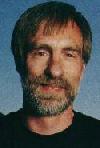
Creator of QDOS (Quick and Dirty Operating System) for use with Seattle Computer Products 8086-based computer. In 1980 Microsoft's Paul Allen contacts Seattle Computer Products Tim Paterson, asking for the rights to sell SCP's DOS to an unnamed client (IBM). Microsoft pays US$50,000 for the right.
Peddle, Chuck
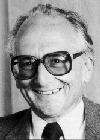
Developed the 6502 and one of the first personal computers the Commodore PET(Personal Electronic Transactor).
Pearcey, Trevor
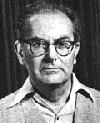
Graduated in 1940 from Imperial College, London with First Class honours in Physics and Mathematics. He came to Australia in late 1945 to work at the Radiophysics Division of CSIR. After working on radar systems, he began his career in computing by initiating the CSIRAC project in 1947 (the first stored-memory electronic computer in Australia). This project was followd by studies of programming languages in the United Kingdom and of computer networks when he returned to Australia in 1959. After a period as a consultant with the Control Data Corporation on the STAR 100 project, he retired from the Caulfield Institute of Technology (now Monash University) in the late 1980's. Trevor Pearcey died on Tuesday, 27 January 1998.
Raskin, Jef
(Mac creator)
In 1967 writes Ph.D. thesis on the Graphical User Interface (GUI) at Penn State University. In his thesis he coins the term "QuickDraw" for the first time. This will eventualy become the name of the Mac's graphics routine 17 years later.
Ritchie, Dennis M. (1941- )
New York born computer scientist who deserves much of the credit along with Ken Thompson for the development in 1973 of UNIX. Ritchie also developed the C programming language.
Roberts, H. Edward

American Air Force officer who, along with three friends, founded the Micro Instrumentation and Telemetry Systems (MITS), which thrived when in 1971 it began producing the large scale integrated calculator kit in the U.S. The company soon introduced the Altair, an affordable computer kit that uncovered a huge market for microcomputers. Roberts, is now a small town medical doctor.
Roberts, Larry (1927- )
Considered to be the father of the ARPA-Net.
Sammet, Jean E. (1928- )

New York born leading expert on the history of programming languages. She developed FORMAC, the first widely used language for manipulating symbolic mathematical expressions, while at IBM. She was the first female president of the Association for Computing Machinery (ACM).
Scheutz, Georg (1785-1873)
and Edvard Raphael (1821-1881)
Father and son team of Swedish engineers who, in 1853, constructed an operational Difference Engine that was modeled after Charles Babbage's plans. Demonstrating that the machine could be constructed with the technology of the day.
Schikard, Wilhelm (1592-1635)
German astronomer, linguist, mathematician, and minister who in 1623 created the first workable adding machine which incorporated John Napier's logarithms.
Schreyer, Helmut (1912-1984)
German engineer who, as a graduate student helped Konrad Zuse design and build his mechanical and electromechanical computers. He is also credited with the idea of using vacuum and neon tubes instead of electromechanical relays.
Shannon, Claude Elwood (1916- )
Michigan born mathematician who wrote several influential papers, including one in 1937 that set the stage for digital computers and another in 1948 that founded information theory. He also wrote a paper that described the stored program computer, which led to the development of John von Newmann's digital, all purpose electronic calculating device. The International Standard Organization (ISO) named the "shannon", a unit of measurement for information content, after him. Shannon also has been recognized as the first person to use the word "bit".
Shockley, William Bradford (1910-1989)
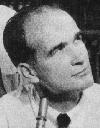
British co-inventor of the transistor, and a member of the AT&T Bell Telephone Laboratories team with John Bardeen and Walter Brattain. The three shared a nobel prize in physics in 1956.
Sinclair, Clive

British inventor, who brought the price of computers below $100.00 (Sinclair ZX80).
Stibitz, George Robert (1904-1995)
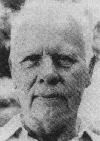
American mathematician at AT&T Bell Laboratories who invented several computers the first of which used Boolean logic to add, subtract, multiply, and divide complex numbers. This Complex Number calculator, completed in 1939, provided the foundation for digital computers and was also the first machine to be used from a remote location.
Stroustrup, Bjarne (1950- )
A Dane who invented the C++ programming language. He also wrote two books about the language.
Ivan Sutherland
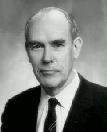
Sketchpad Project, MIT, 1963
The display, a lightpen, and a bank of switches were the interface on which Ivan based the first interactive computer graphics. In 1963, his Ph.D. thesis, "Sketchpad: A Man-machine Graphical Communications System," used the lightpen to create engineering drawings directly on the CRT. Highly precise drawings could be created, manipulated, duplicated, and stored. The software provided a scale of 2000:1, offering many acres of drawing space.
Sketchpad pioneered the concepts of graphical computing, including memory structures to store objects, rubber-banding of lines, the ability to zoom in and out on the display, and the ability to make perfect lines, corners, and joints. This was the first GUI (Graphical User Interface) long before the term was coined.
Suess, Randy
He and a friend, Ward Christensen, created the first BBS February 16, 1978, in Chicago.
It wasn't called a BBS. The name was CBBS.
The first BBS ran on an S-100 computer with 64k RAM and two single-sided 8" diskettes each holding 250k.
Randy put the hardware together; Ward wrote the BBS software in 8080 assembler and served as the system operator, a term quickly shortened to sysop.
Teal, Gordon K. (1907- )
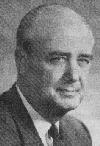
Texas born Texas Instruments physicist who, in 1954, perfected a way of making transistors out of silicone, one of the most common elements, instead of using germanium, which cost more than gold.
Terrell, Paul

Started the Byte Shop in December 1975. He also was interested in selling Apple I's. Without Paul Terrell and the Byte shop Apple may have never gotten anywhere.
Torvalds, Linus
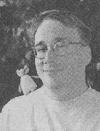
In 1990, Torvalds, a student of 25 years old at the University of Helsinki,
was looking to replace his old Commodore. He did not want DOS for an OS and
UNIX was expensive. That is why he created LINUX, with the help of many people
from around the globe. An operating system distributed for free an alternative
for Microsoft WINDOWS.
Tramiel, Jack
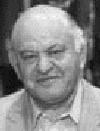
Auschwitz survivor who founded Commodore International, which released the Pet (Personal Electronic Transactor) in 1978 and began the micro computer race with Tandy Radio Shack and Apple Computer. Tramiel, later sold the Texas based company to buy Atari from Warmer Communications.
Turing, Alan Mathison (1912-1954)

English mathematician who was crucial in the work at Bletchley Park designing the Colossus, which deciphered German code during WWII and is considered to be the first electronic computer. He later invented the Turing Test, in which he proposed that if a computer could pass his test, it had proven that it could think. (So far no computer has passed). In 1952 he was convicted for "unnatural" acts and forced to take female hormones because he was an homosexual. He died two years later, after knowingly eating an apple dipped in strychnine.
Wang, An (1920-1990)
Chinese physicist and engineer who invented and patented magnetic core storage while working at Harvard University for Howard Aiken. IBM bought the storage method for a ridiculously low price considering that magnetic string memories ended up making stored program computers commercially practical. Want later founded his own company in Boston, Wang Laboratories Inc. The company created the first desktop computer and also developed word processing in which text editing could be done on screen.
Warnock, John E.
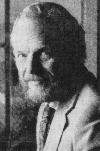
He invented Post-Script PDL (Page Description Language) a major factor leading to the desktop publishing revolution. He and Charles Geschke were the founders of Adobe Systems in 1982.
Watson, Thomas J. (1874-1956)

New York born president of the International Business Machines (IBM) Corp. who built up the company during WWII and also invested in Howard Aiken's plan to build the Harvard MARK I calculator.
Watson, Thomas J. Jr. (1914-1993)
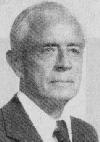
He took over his father's position as president of IBM in 1952, convinced that the company should build and market computers. He eventually led the company to having total domination of the computer market.
Wilkes, Maurice Vincent (1913- )
English mathematician who designed and constructed the EDSAC (Electronic Delay Storage Automatic Calculator), which was a stored memory computer made up of 16 steel tubes and 3,000 vacuum tubes that could be programmed in English and perform addition in 1.4 milliseconds. He later constructed the EDSAC 2, which is the first computer to have a micro programmed control unit.
Williams, Frederic Galland (1911-1977)
English engineer who, with the help of Tom Kilburn, developed cathode-ray tube (CRT) storage for the SEEM (small scale electronic machine), which first ran in 1948, at Manchester University. CRT's were the first high speed random access memory (RAM), which allowed computer to go directly to specific stored information.
Williams, Samuel B.
American engineer for AT&T Bell Telephone Laboratories who, in 1939, oversaw the production of George Stibitz's powerful calculating machine.
Wirth, Niklaus (1934- )
Swedish born who, created Oberon an object oriented programming language and operating system that used 1.5 megabytes of RAM. He also created Modula-2 and Pascal.
Wozniak, Steven Gary "The Woz" (1950- )
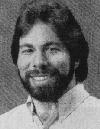
Electrical engineer from California who co-founded Apple Computer in cooperation with Steve Jobs after creating the Apple computer in Jobs' parents' garage. Wozniak is considered the "father" of the Apple, and Jobs was the ambitious force. The pair founded Apple Computer Inc. in 1976 and created the phenomenally successful Apple II computer, which moved the computer industry into the big time and changed Apple from a garage company to a multimillion dollar one. In 1985, he left Apple for his own company. CL-9 (Cloud 9), which designed remote control products. He now devotes his time to helping young people learn about computers. He also helped Mitch Kapor found the Electronic Frontier Foundation, which is a nonprofit civil liberties group dedicated to understanding the social impact of the digital revolution and protecting online freedom.
Yamachita, Hideo (1899-1993)
Japanese engineer considered the father of Japan's computer industry. He led the team in 1950 that created Japan's first large electronic computer, the Tokyo Automatic Calculator (TAC), with vacuum tubes.
Yang, Jerry (right)

1994. That's when with David Filo (left), these two PhD students created Yahoo! directory to help their Stanford pals locate cool Web sites.
Zuse, Konrad (1910-1995)

German engineer who in 1938 created the Z1, one of the first binary digital computers, which was destroyed during World War II. Zuse also developed the successors Z2, Z3, and Z4 the last of which was the only one to survive the war.
pcbiography.net